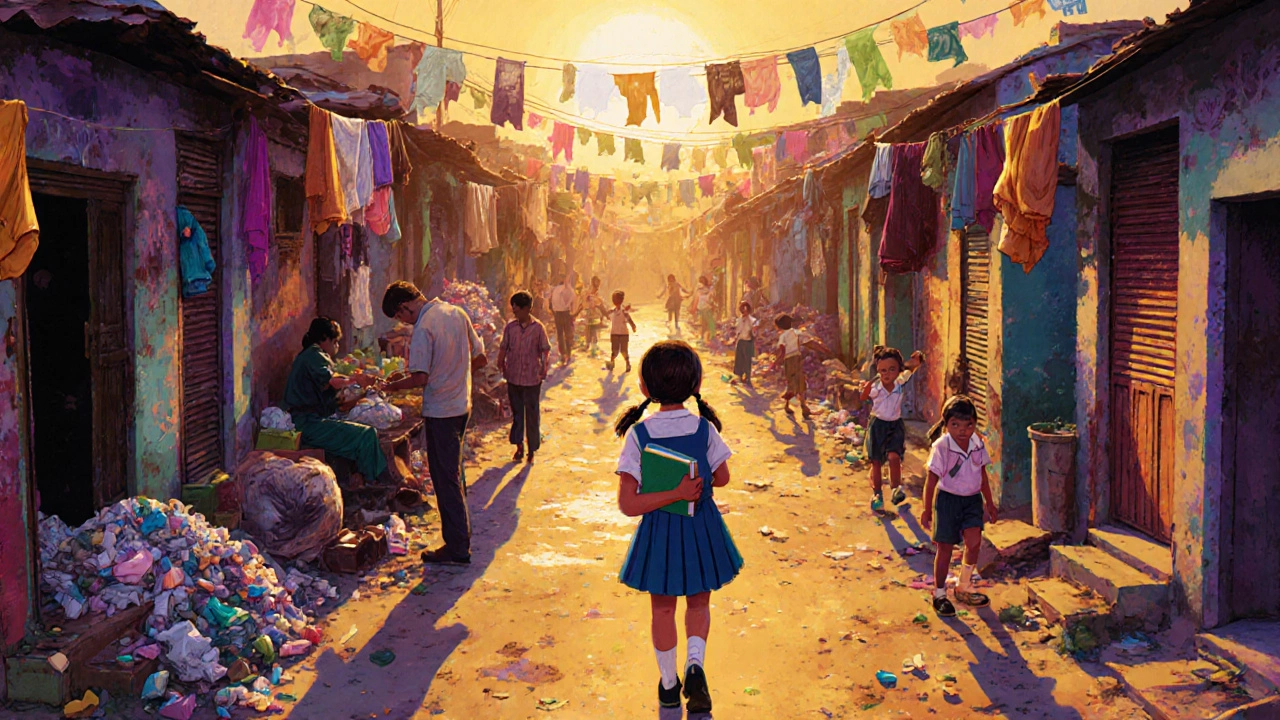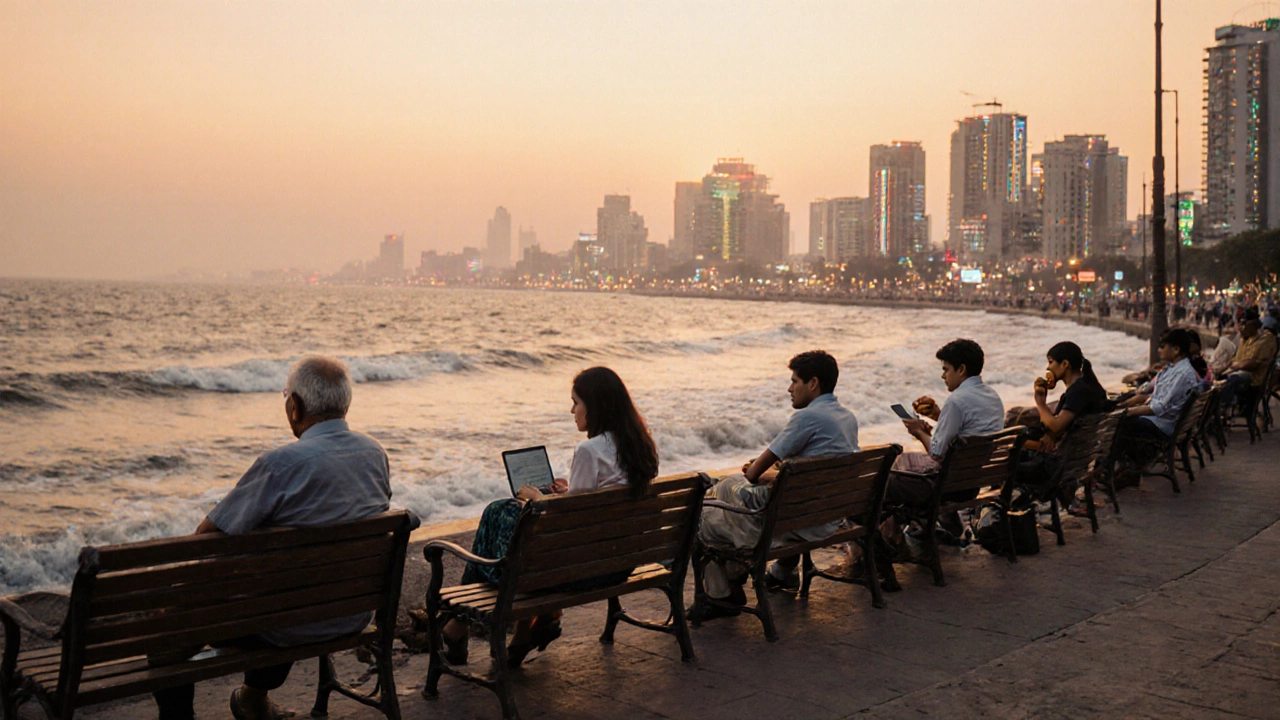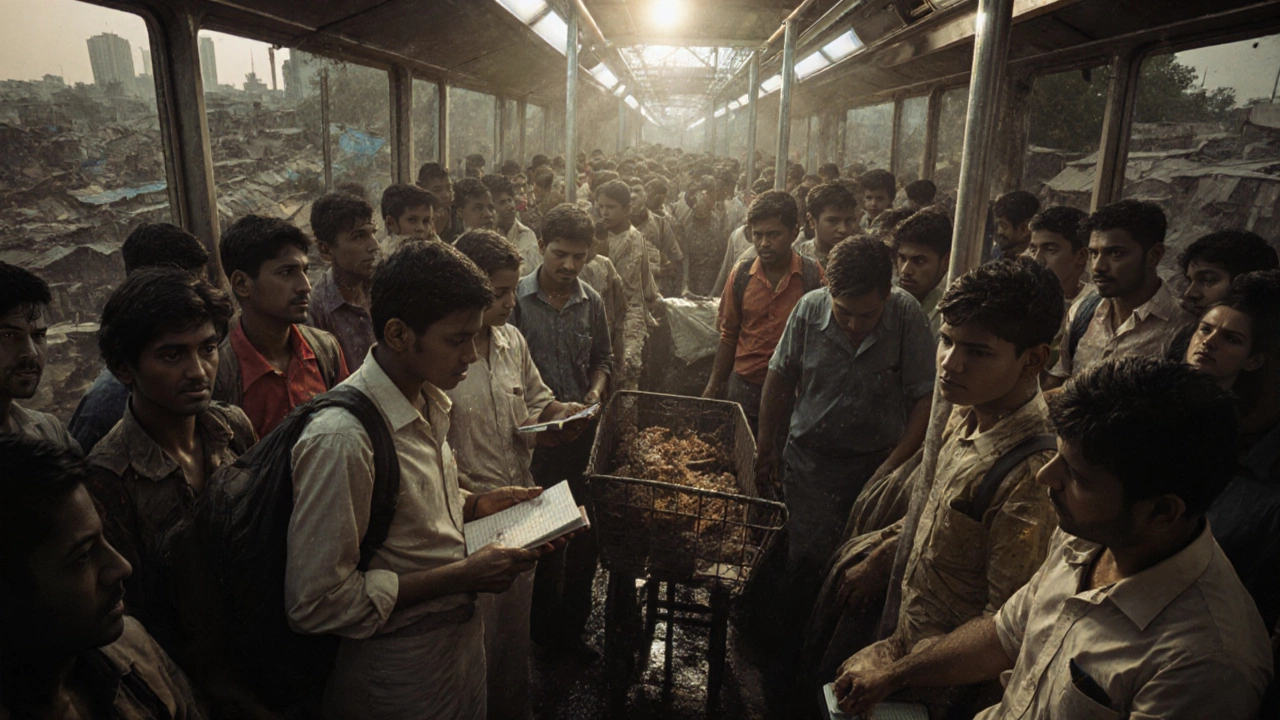Ask anyone in India which city is called the City of Dreams, and they’ll say Mumbai without hesitation. But why? It’s not just because of Bollywood or the Gateway of India. Mumbai is where people from every corner of the country come with nothing but hope in their pockets and a dream in their heart. It doesn’t promise comfort. It doesn’t guarantee success. But it gives you a shot. And that’s why millions call it home.
Why Mumbai Is Called the City of Dreams
Mumbai isn’t just a city. It’s a magnet. Every year, over 500,000 people move here from rural towns and small cities looking for work, fame, or just a better life. You’ll see them on the local trains-students with notebooks, factory workers in uniforms, street vendors with carts, actors carrying headshots. They all believe this city will change their story.
It’s the same energy that drove Dilip Kumar in the 1940s, Amitabh Bachchan in the 70s, and today’s young influencers on Instagram. Mumbai doesn’t care where you’re from. It only cares if you’re willing to work. That’s the unspoken rule. No connections? No problem. Just show up, keep showing up, and eventually, someone will notice.
The city’s skyline tells the story too. Slums sit right next to 50-story towers. A chai wallah might live in a one-room tenement but send his daughter to a private school. A delivery boy on a scooter might be writing his first screenplay at night. This mix of desperation and ambition is what makes Mumbai unique. It’s not the cleanest, safest, or most organized city in India. But it’s the one that gives people a real chance.
The Real Mumbai: Beyond the Postcards
Most tourists see Mumbai as a place of luxury hotels, sea views, and fancy restaurants. But that’s only one side. The real Mumbai lives in the chaos of Dharavi-the largest slum in Asia-where over a million people live in less than two square kilometers. Yet, Dharavi also has over 5,000 small businesses. Recyclers, leather workers, textile makers-they all run their own shops out of tiny homes. The city doesn’t just tolerate poverty. It turns it into opportunity.
Then there’s the railway system. Over 7.5 million people ride the suburban trains every day. These trains are packed so tight you can’t move. But they’re also where friendships are made, job leads are shared, and dreams are whispered. You’ll hear someone say, “I got an interview tomorrow,” and someone else will reply, “Which company?” And in that moment, Mumbai becomes more than concrete and steel. It becomes a network of hope.
The film industry-Bollywood-isn’t just entertainment here. It’s a lifeline. Over 200 movies are made every year. Most of the actors aren’t from rich families. They’re from villages, small towns, even refugee camps. They came here with no money, no contacts, and no backup plan. But they kept auditioning. And some of them made it. That’s why people say Mumbai doesn’t give you a dream. It gives you the tools to build one.
How Mumbai Shapes India’s Culture
Mumbai isn’t just a city. It’s a cultural engine. It’s where Hindi, Marathi, Gujarati, Tamil, and English mix into a new kind of language. You’ll hear Bollywood songs in auto-rickshaws, street vendors quoting dialogues from old films, and teenagers dancing to hip-hop with a Mumbai accent.
The food tells the same story. Vada pav-India’s answer to a burger-was invented here by a street vendor in the 1960s. Today, it’s eaten by office workers, students, and tourists alike. You’ll find Punjabi dhabas next to Goan seafood shacks and Parsi bakeries serving berry pulao. No other city in India blends so many regional flavors so naturally.
Even the festivals are different here. Ganesh Chaturthi isn’t just a religious event. It’s a city-wide party. Communities spend months building huge idols, then parade them through the streets with music and dancing. In 2024, over 12,000 idols were immersed in the sea in a single day. That’s not just tradition. It’s collective energy.

Who Comes to Mumbai-and Why They Stay
People don’t come to Mumbai for the weather. It’s humid, rainy, and crowded. They don’t come for the cost of living-it’s one of the most expensive cities in the country. They come because the opportunities are real.
Here’s what you’ll find:
- Finance: The Reserve Bank of India, the Bombay Stock Exchange, and headquarters of 70% of India’s top companies are here. Entry-level jobs pay more than in most other cities.
- Entertainment: Bollywood, TV studios, ad agencies, and digital content creators all operate here. You don’t need a degree-just talent and persistence.
- Education: IIT Bombay, Tata Institute of Social Sciences, and St. Xavier’s attract students from across India. Scholarships and part-time work make it possible.
- Startups: Mumbai has over 1,200 registered startups. Many were founded by people who moved here with ₹5,000 in their bank account.
And here’s the truth: not everyone succeeds. Many leave after a few years, discouraged. But even those who leave carry something back home-a skill, a connection, a story. That’s why Mumbai’s influence spreads far beyond its borders.
Mumbai vs Other Indian Cities
People often compare Mumbai to Delhi, Bangalore, or Hyderabad. But the difference is clear.
| Aspect | Mumbai | Delhi | Bangalore | Hyderabad |
|---|---|---|---|---|
| Opportunity Type | Entertainment, Finance, Startups | Government, Politics, Defense | Tech, IT Services | IT, Pharma, Education |
| Cost of Living | Very High | High | High | Moderate |
| Entry Barrier | Low (talent matters more than background) | High (networks matter) | High (degrees and experience required) | Moderate |
| Cultural Mix | Extremely Diverse | Mixed | Mostly South Indian | South Indian + Telugu |
| Dream Factor | Very High | Moderate | Low | Low |
Mumbai is the only city where a 19-year-old from Bihar can walk into a casting office and land a lead role. Where a college dropout can build a ₹10 crore app in two years. Where your last name doesn’t matter-but your hustle does.

What to See and Do in Mumbai
If you’re visiting, don’t just stick to the tourist spots. Here’s how to feel the real City of Dreams:
- Take the local train from Churchgate to Virar at 8 a.m. Watch the crowd. Listen to the conversations.
- Walk through Dharavi with a local guide who’s lived there for 20 years. Don’t go as a tourist. Go to understand.
- Have vada pav from a street cart in Matunga. Eat it standing up. Don’t wait for a table.
- Visit Film City on a weekday. See where your favorite movies were made.
- Go to Marine Drive at sunset. Sit on the bench. Watch the city light up. You’ll see families, couples, students, and old men-all here because they believe in something.
Mumbai doesn’t need you to love it. It just needs you to see it. And once you do, you’ll understand why it’s called the City of Dreams.
Why is Mumbai called the City of Dreams?
Mumbai is called the City of Dreams because it attracts millions of people from across India who come with nothing but hope. It offers real chances for success in film, finance, startups, and more-even without wealth or connections. The city rewards hard work and talent, making it a place where dreams can become reality.
Is Mumbai the most expensive city in India?
Yes, Mumbai is the most expensive city in India for housing, dining, and transportation. Rent in prime areas can cost over ₹1 lakh per month. But despite this, people still move here because salaries and opportunities are higher than in other cities, especially in entertainment and finance.
Does everyone in Mumbai become rich or famous?
No. Most people in Mumbai live modestly. Many work long hours in low-paying jobs. Only a small fraction become actors, CEOs, or influencers. But even those who don’t “make it” often gain skills, experience, or networks they can use later. The dream isn’t always about becoming rich-it’s about having a shot.
Can someone from a small town succeed in Mumbai?
Absolutely. Many of India’s biggest stars, entrepreneurs, and artists came from villages or small towns. What matters is effort, adaptability, and resilience. Mumbai doesn’t care where you’re from-it only cares what you can do. Thousands prove this every year.
Is Mumbai safe for solo travelers?
Mumbai is one of the safest major cities in India for solo travelers, especially during the day. The local train system is crowded but secure. Street food is generally safe if you pick busy stalls. Just avoid isolated areas at night and be cautious with strangers offering help. Most locals are helpful and curious, not threatening.
What Comes After the Dream?
Some people leave Mumbai after five years. Others stay for life. The ones who leave often take something with them-a business idea, a skill, a confidence they didn’t have before. The ones who stay? They become part of the city’s heartbeat.
Mumbai doesn’t give you a dream. It gives you the chance to chase it. And that’s more than most places in the world can say.
